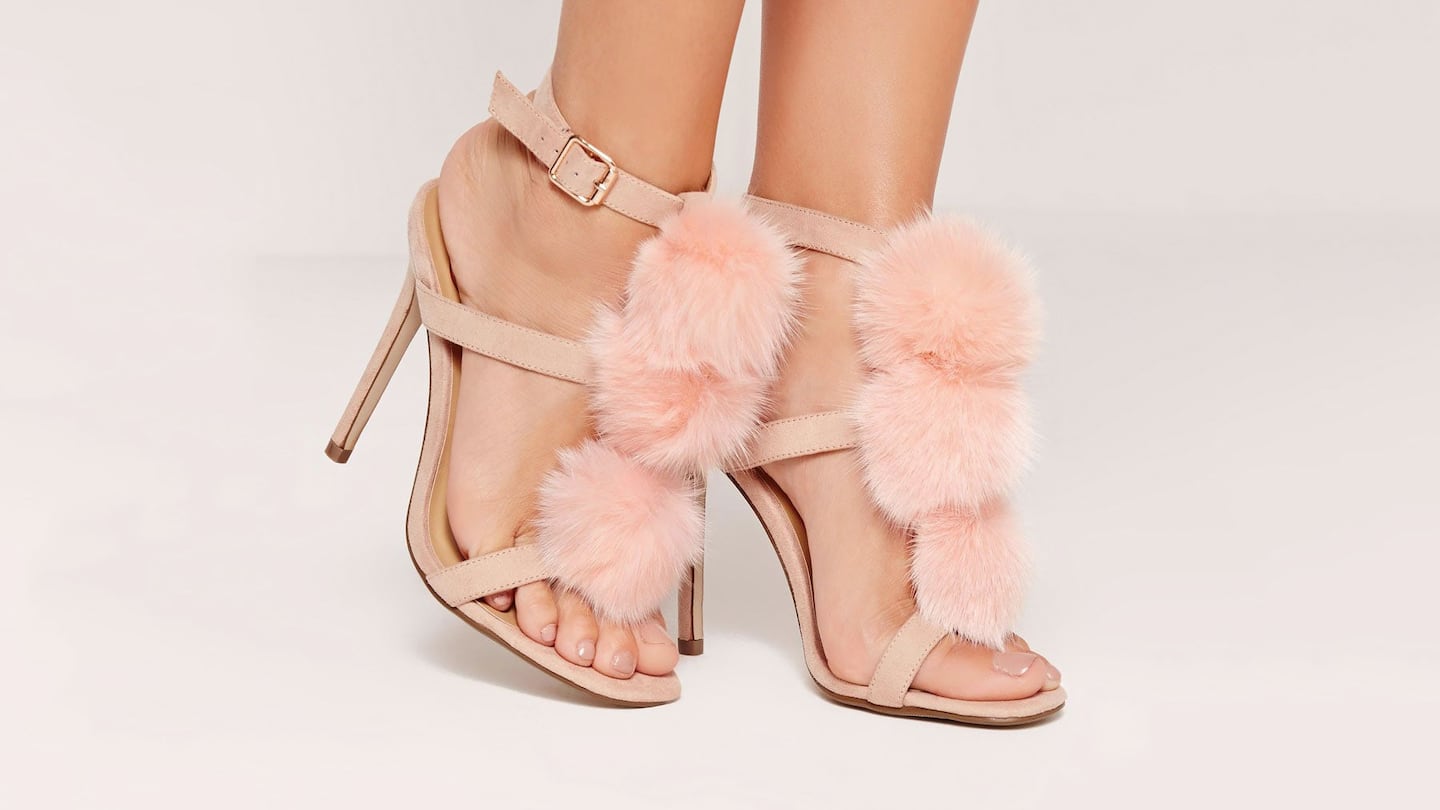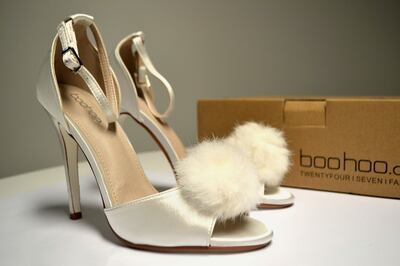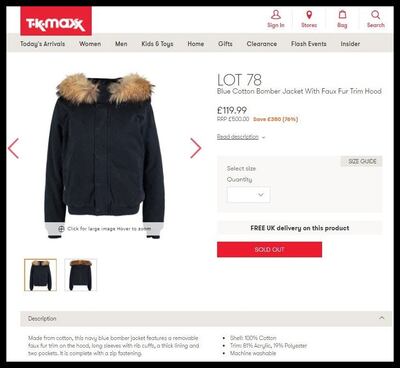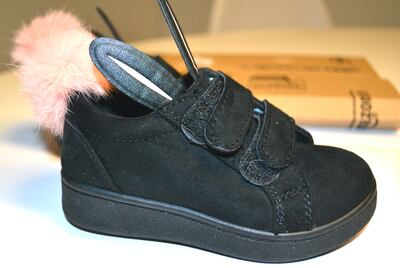
The Business of Fashion
Agenda-setting intelligence, analysis and advice for the global fashion community.

Agenda-setting intelligence, analysis and advice for the global fashion community.

LONDON, United Kingdom — Imagine buying a new pair of shoes with faux-fur trimmings, only to discover that your purchase was actually made of animal fur. This was exactly what happened earlier this year to shoppers who purchased £30 peep-toe heels with pom-pom embellishments labelled as "faux fur" from supposedly fur-free fast fashion retailer Boohoo. An investigation conducted by Humane Society International (HSI), in partnership with news organisation Sky, found that the "faux fur" on the sandals in question was actually rabbit fur.
The report, published December 20, also discovered Boohoo was selling £5 statement earrings containing mink, and named six other retailers that were falsely advertising animal-fur items as synthetic, including fur-free high street giant TK Maxx, which sold a Lot 78 brand bomber jacket with a fox fur-trimmed hood, and Amazon, which sold fox, rabbit and chinchilla fur items via its market place.

Boohoo shoes labelled as "faux fur" were actually made with rabbit fur | Source: HSI
Boohoo was fast to react, immediately removing offending items from its site. “We are very disappointed that on this occasion our high standards have been breached by the suppliers from who these items have been sourced,” the e-tailer said in a statement. “The breach of the policy and its standards is being investigated as a matter of urgency.” Amazon, too, said that the products highlighted in the investigation were no longer available for purchase, adding, “All Marketplace sellers must follow our selling guidelines and those who don’t will be subject to action.” (TK Maxx did not respond to a request for comment.)
ADVERTISEMENT
But this is not the first time an investigation by HSI UK has uncovered false advertising or mislabelling of animal fur as faux fur. In the past, retailers including Missguided and House of Fraser have been exposed by similar inquiries. Claire Bass, executive director at HSI UK, says the problem of animal fur, labelled as synthetic or not labelled at all, has been growing since she began leading the company's efforts to investigate the practice in the UK two and a half years ago. “The shift we’ve witnessed in that time has been this growing availability of really cheap fur at the low end of the market.”
She names market stalls, small independent boutiques and e-commerce sites as the most common culprits, but notes that “big name retailers that were trying to subscribe to fur-free policies were also falling foul of this and accidentally selling real fur as fake fur.”
Big name retailers that were trying to subscribe to fur-free policies were failing foul and accidentally selling real fur as fake fur.
Across the Atlantic, the Humane Society US has been "tackling false advertising and mislabelling of real fur for over a decade now," says PJ Smith, senior manager of fashion policy at HSUS. "It was a widespread problem within the retail industry." Initially Smith found that a loophole in US federal law didn't require any fur valued at less than $150 to be labelled. "This is what led to a lot of problems where consumers that don't want to buy fur were being duped into purchasing real fur because they didn't see it on the label," he says.
In 2010, US President Obama signed in The Truth in Fur Labelling Act, a bill designed to close the loophole and put legal safeguards in place so consumers could make more informed purchasing decisions. However, Smith says the problem of missing or inaccurate labelling still persists: “Even though the law is passed, it’s not being enforced. We’re still finding lots of garments without any sort of fur mentions. And then that’s just quality control on the retailer’s side.”
Last year, for example, HSUS filed an enforcement petition to the Federal Trade Commission; Neiman Marcus, Kohl's and Nordstrom were among the 17 retailers named in the report for selling garments that were falsely advertised or labelled as faux fur. (Nordstrom told BoF that since the petition "we've continued to enhance our processes to ensure that we provide correct information to our customers and have implemented specific measures to help prevent similar issues from occurring in the future." Neiman Marcus and Kohl's did not respond to requests for comment.)

Fur-free retailer TK Maxx sold a bomber jacket with a fox fur trim | Source: HSI
Fur advocate Mike Moser, chief executive at the British Fur Trade Association and former director of standards at the International Fur Federation, agrees that it is important consumers are given truthful information about the fur they are buying, with the onus falling on the merchant to accurately disclose when animal fur is used. “The people importing [these products] have to be asked: are you aware? Are you doing the necessary checks on your supply chain? If they’re not, then they’re breaking the law and they should be investigated.”
Designer Helen Moore, whose namesake brand specialises in luxury faux fur outerwear and accessories, sources the materials she uses from a specialist consultant to ensure she can track every part of her supply chain efficiently. “I have tried sourcing it myself from China but I don’t have the extensive knowledge that our sourcing consultant has; I lack the knowledge and have no way of checking out the factories or the quality,” she explains.
ADVERTISEMENT
Larger retailers, however, who rely on multiple suppliers for inventory, are not always as vigilant — Human Society investigations in the US and the UK have found it common practice to rely on the naked-eye judgement of buyers, copywriters and quality control staff to determine the authenticity of trims and smaller fur items.
“When the product reaches the point of sale we find often there can be different quality control mechanisms in place within the same company for their in-store sales versus their online sales,” explains Bass. “A lot of times it would go down to a copywriter who was putting the information on the website,” agrees Smith. “It would come to the fur and they would use their judgement to know if it was real or not.”
And, as technological advances boost the quality of artificial fur, telling it apart from authentic fur is becoming more and more difficult. Bass says that common feedback from roundtable meetings intended to discover where things went wrong with retailers caught falsely selling animal fur as faux was that they were using price as a guide to deciphering its legitimacy. “A cheap price point is no indicator of [whether] a product will be fake,” she explains, pointing to China and Poland as good examples of where mega-fur farms are producing animal fur very cheaply.
“We’re talking about strips of fur on a trimmed jacket,” says Smith. “If you actually take the jacket apart and see what is actually fur, you’re talking about something that might be half an inch wide. So, if you try and put a cost on that little piece of fur, you’re talking about a few dollars.”
When customers demand a better product the easy alternative for sewing factories is to use a real fur as it is cheaper to buy than high quality faux fur.
Conversely, premium-grade faux fur is becoming more expensive. “It is because of this discrepancy in quality and price that there is a temptation to use real fur instead of faux fur,” says Moore. “When customers demand a better product the easy alternative for sewing factories is to use a real fur [as] it is cheaper to buy small scraps of real fur than lengths of high quality faux fur. Cat and rabbit fur is cheap to produce, especially where there is very little regulation.”

"Faux fur" children's shoes sold on Amazon were actually made with rabbit fur | Source: HSI
HSI works with retailers to offer staff training at all points along their supply chain to help tackle the problem of false advertising and mislabelling. The organisation also stresses the importance of doing regular spot checks with suppliers. “Obviously it starts with briefing suppliers very clearly,” says Bass, “and if they’re a no-fur company [explaining], ‘We don’t want animal fur, here’s how we want you to tell the difference between real fur and fake fur.’ But then not just saying, ‘Right, well, we’ve told them,’ and walking away.”
Smith recommends retailers with a fur-free policy make their stance known publicly. “It makes it a lot easier for buyers to know what to look for and vendors to know as well,” he says. He also advises “putting protocols in place to make sure that every garment you’re selling is labelled correctly.”
ADVERTISEMENT
Moore adds that testing for real or artificial fur is a straightforward and reliable process, but that one of simplest ways for vendors to differentiate artificial fur from animal fur is to look at the fibres through a microscope. “Real fur fibres have a pointed tip and a fake fur fibre is blunt at the end,” she says. “Even through a magnifying glass the difference can be visible.”
Related Articles:
[ The Great Fur DebateOpens in new window ]
[ Inside the Growing Global Fur IndustryOpens in new window ]
[ Will Millennials Boost the Fur Trade?Opens in new window ]
From analysis of the global fashion and beauty industries to career and personal advice, BoF’s founder and CEO, Imran Amed, will be answering your questions on Sunday, February 18, 2024 during London Fashion Week.
The State of Fashion 2024 breaks down the 10 themes that will define the industry in the year ahead.
Imran Amed reviews the most important fashion stories of the year and shares his predictions on what this means for the industry in 2024.
After three days of inspiring talks, guests closed out BoF’s gathering for big thinkers with a black tie gala followed by an intimate performance from Rita Ora — guest starring Billy Porter.